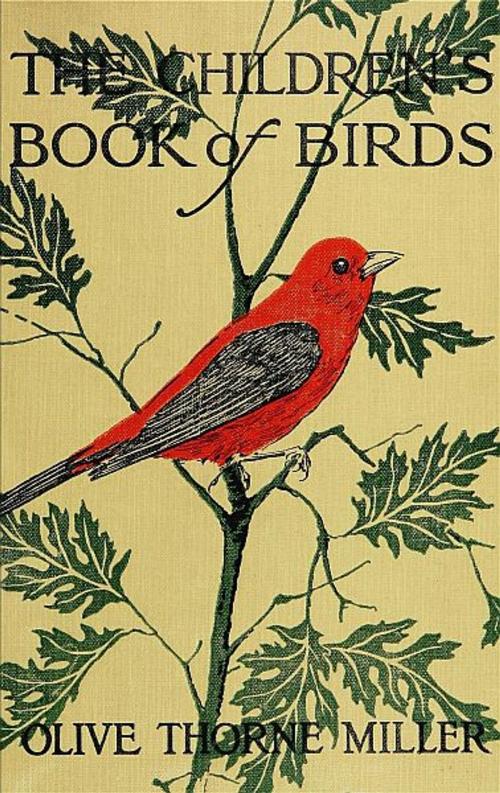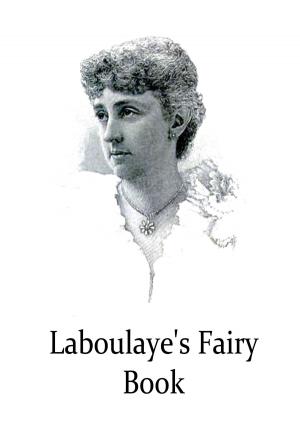| Author: | Olive Thorne Miller | ISBN: | 1230000027507 |
| Publisher: | Zhingoora Books | Publication: | October 27, 2012 |
| Imprint: | Language: | English |
| Author: | Olive Thorne Miller |
| ISBN: | 1230000027507 |
| Publisher: | Zhingoora Books |
| Publication: | October 27, 2012 |
| Imprint: | |
| Language: | English |
PREFACE
The Children's Book of Birds combines under a single cover the First and Second Books of Birds, originally published in 1899 and 1901 respectively and still popular with children in and out of school and with other beginners in the study of birds.
The book is intended to interest young people in the ways and habits of birds and to stimulate them to further study. It has grown out of my experience in talking to schools. From the youngest kindergarten scholar to boys and girls of sixteen and eighteen, I have never failed to find young people intensely interested so long as I would tell them about bow the birds live.
Some of the results of these talks that have come to my knowledge have been astonishing and far-reaching, such as that of one boy of seven or eight, who persuaded the village boys around his summer home to give up taking eggsand killing birds, and watch them instead, and who was dubbed "Professor" by his eager followers. The effect has always been to make children love and respect the living bird.
It has therefore seemed to me that what is needed at first is not the science of ornithology,—however diluted,—but some account of the life and habits, to arouse sympathy and interest in the living bird, neither as a target nor as a producer of eggs, but as a fellow-creature whose acquaintance it would be pleasant to make.
Naturally I have drawn on my own observations for much of the matter contained in this book, but these have been supplemented by consultation of recognized authorities in the various fields of ornithology.
In each bird family treated of in the Second Book I have given accounts of species to be found in the South and West as well as in the Eastern States, and I have selected the most common or typical species of each family. In cases where it was possible, I have chosen species represented in the different sections of the country, not only because the family traits are better shown, but because it is more encouraging to a[vii] beginner to become acquainted with birds he can see almost anywhere. When familiar with these, he will be able to identify and study the rarer species.
OLIVE THORNE MILLER.
PREFACE
The Children's Book of Birds combines under a single cover the First and Second Books of Birds, originally published in 1899 and 1901 respectively and still popular with children in and out of school and with other beginners in the study of birds.
The book is intended to interest young people in the ways and habits of birds and to stimulate them to further study. It has grown out of my experience in talking to schools. From the youngest kindergarten scholar to boys and girls of sixteen and eighteen, I have never failed to find young people intensely interested so long as I would tell them about bow the birds live.
Some of the results of these talks that have come to my knowledge have been astonishing and far-reaching, such as that of one boy of seven or eight, who persuaded the village boys around his summer home to give up taking eggsand killing birds, and watch them instead, and who was dubbed "Professor" by his eager followers. The effect has always been to make children love and respect the living bird.
It has therefore seemed to me that what is needed at first is not the science of ornithology,—however diluted,—but some account of the life and habits, to arouse sympathy and interest in the living bird, neither as a target nor as a producer of eggs, but as a fellow-creature whose acquaintance it would be pleasant to make.
Naturally I have drawn on my own observations for much of the matter contained in this book, but these have been supplemented by consultation of recognized authorities in the various fields of ornithology.
In each bird family treated of in the Second Book I have given accounts of species to be found in the South and West as well as in the Eastern States, and I have selected the most common or typical species of each family. In cases where it was possible, I have chosen species represented in the different sections of the country, not only because the family traits are better shown, but because it is more encouraging to a[vii] beginner to become acquainted with birds he can see almost anywhere. When familiar with these, he will be able to identify and study the rarer species.
OLIVE THORNE MILLER.




![Cover of the book On The Principle Of Population [Christmas Summary Classics] by Olive Thorne Miller](https://www.kuoky.com/images/2012/november/300x300/1230000032292-dYaV_300x.jpg)


![Cover of the book Emma [Christmas Summary Classics] by Olive Thorne Miller](https://www.kuoky.com/images/2012/november/300x300/1230000032276-w0rs_300x.jpg)



![Cover of the book Some Fruits of Solitude [Christmas Summary Classics] by Olive Thorne Miller](https://www.kuoky.com/images/2012/december/300x300/1230000036230-VEji_300x.jpg)



